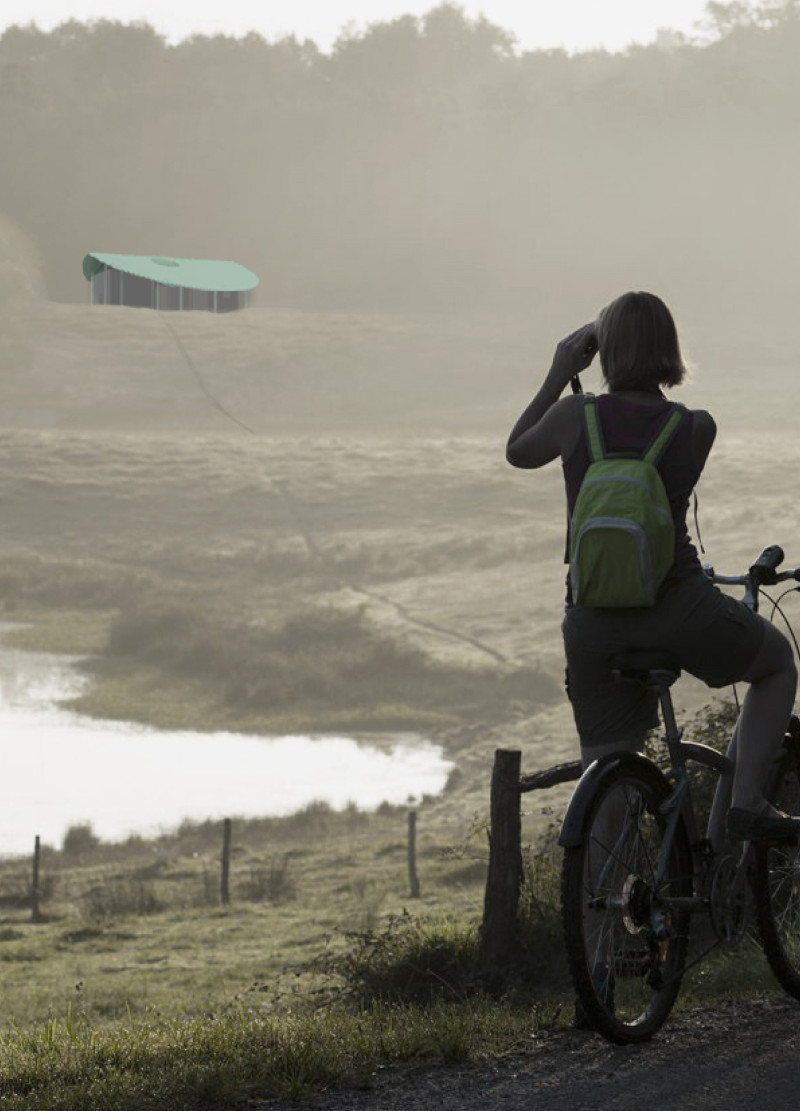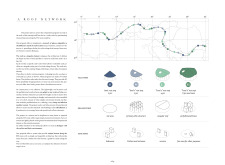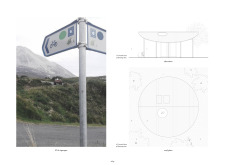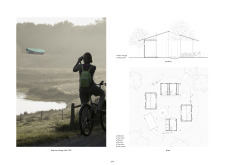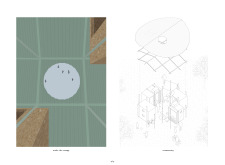5 key facts about this project
The design includes a network of rest stops along the EV6 cycling route, which stretches from western France to eastern Romania. It aims to create adaptable shelters that meet the different needs of cyclists while improving their connection to the surrounding environment. The overall concept focuses on modular architecture, promoting versatility and usability while ensuring a consistent visual identity across the structures.
Roof Design
A defining feature of each pavilion is its roof, which shapes both the look and function of the design. Each pavilion has a unique roof, allowing for different sizes ranging from small to large. The roofs use a color-coding system, making it easy for cyclists to identify each location. This thoughtful approach not only promotes cohesion among the rest stops but also reflects the traditional building styles found in many European villages.
Functional Spaces
The pavilions are designed to serve the essential needs of cyclists. Each structure includes spaces for sleeping, cooking, dining, and showering, arranged to maximize practicality. Inside, wooden boxes separate various areas beneath a simple steel canopy, creating flexible spaces that encourage different uses. Cyclists can set up tents, gather around fires, or take shelter from the rain, all within these accommodating environments.
Construction Efficiency
Efficient construction methods play a significant role in the design. The lightweight roof structures and prefabricated wooden boxes allow the pavilions to adjust to different site conditions. Key materials used include wood for warmth and a natural look, paired with steel for strength. This approach ensures that each pavilion can be quickly assembled in various locations, even those that are remote.
Sustainability Measures
Sustainability is a key consideration in the design. Each pavilion is built to be self-sufficient, using solar panels for energy and rainwater collection systems for water management. This focus on sustainable resources addresses the needs of cyclists while aiming to lessen environmental impact. The careful placement of these structures helps them blend into their natural surroundings, enhancing the overall experience for cyclists on their journey.
With their thoughtful placement, the pavilions encourage users to engage with both the buildings and the landscape around them. This integration of architecture and site leads to a rich experience for cyclists, adding depth to their travels along the EV6 route.


